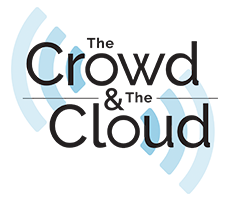
Newsletter
Sign up and stay in-the-know about The Crowd & The Cloud and the world of citizen science.
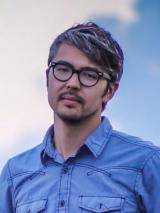
My name is Jeff Warren. I’m one of the co-founders of Public Lab. We're developing new techniques to measure environmental pollution and the environment's effects on people.
What is Public Lab, and how did it get started?
Public Lab is two distinct projects. It’s a collective attempt to develop new tools and new techniques for measuring pollution. It's really like an R&D lab, but turned inside out where everyone is working together Wikipedia style to make new, cheaper, and more accessible and easy-to-use sensors and methodologies. The other part of it is much more specific. Instead of developing generalized tools that anyone can use, it's about monitoring specific sites where pollution is affecting a specific community. That's much more about looking at the things that are affecting you, your family, your health, and trying to understand them better. We’re trying to get a voice in the process of responding to pollution. You're able to investigate it yourself.
In April of 2010, the BP oil spill in the Gulf of Mexico happened. And, there were a few dozen people on that grassroots list that were sort of primed; we had a line of communication. We had some common interests and techniques that we had come up with and the question we posed for ourselves was, could we apply these techniques to this problem? That's when the Public Lab really began (C&C: At first the full name was “Public Lab for Open Technology and Science”) because it was the people who came together around that disaster who continued to refine the tools and really reframed these practices as a form of monitoring, and evidence collection in environmental cases. It also led to the idea that we could develop new tools for other problems and that anyone affected by pollution around the world should be able to measure it. And certainly, the online culture was one way to approach that problem.
How was Public Lab brought into the BP oil spill?
Initially, I don't think anyone saw a connection. I mean, it was just this disaster that was unfolding. And then I was at a tech conference when someone turned to me and said, "You should just do some balloon mapping of the oil spill." My initial thought was, I don't live there. I mean, I'd love to help, of course but, it's sort of like a typical story of some person with their technology wants pitch in. Usually, I think it's not common that would actually be helpful, because technologists who are not there don't necessarily understand the problem deeply. But I started calling and looking up people who were working on the spill.
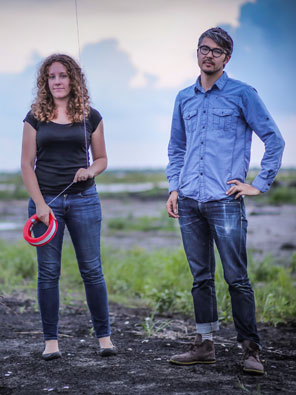
Shannon Dosemagen (left) and Jeff
Within a couple of days, I'd spoken with folks from the Louisiana Environmental Action Network and the Louisiana Bucket Brigade. I said, "Hey, we’ve been experimenting with this way of taking aerial photographs. Is that something that would be useful?” I was sort of a little skeptical of it ourselves, but they were interested. So then, we bought plane tickets, and we had a thousand dollars to do balloon mapping.
We managed to meet with Bucket Brigade folks on their front porch the morning after we arrived, and Shannon Dosemagen was there. The Bucket Brigade knows many of the communities along the coast, especially those that are affected by oil and gas. They were sort of this nexus of activity. One of their main interests was to document reports of oil, and I think they were a little surprised that we had just shown up, but at the end of that day, we were out in the water of Port Fourchon.
A guy named Tony got us onto a police boat, actually. We weren’t sure why they were interested, the Lafourche Parish Port Commission, but of course they were worried about the damage to their community. By the end of that day, we were out on a boat and they were driving fast enough to put a kite in the air. We took the first couple of photos which were good, but it wasn’t a big map or anything. It was sort of a proof of concept.
Why was it important for the Bucket Brigade to document with photos?
They were already gathering evidence, and they had a reporting system. They used the Ushahidi application and they were making this map of the reports of oil. Shannon was really involved in that. Part of it was that the public didn't really know what was going on. There was very little information being published by the institutional and government response. And so, it was hard to tell what was happening. The NOAA reports daily showed projections in a very, very low resolution of where they thought the oil was.
Journalists weren't being allowed into a lot of the areas affected. The Breton Sound was actually closed to air traffic below 3,000 or 4,000 feet. You couldn’t fly below that. It was being described at the time as a “media blackout.” They were actually controlling access to the site, stopping journalists from photographing and investigating. In some cases, there were BP employees chasing journalists off of beaches to prevent them from taking pictures and documenting what was going on. These are public beaches, you know, public land.
There was a real information flow problem. And I think that the government response, NOAA, the Coast Guard, should have been much better. There's a lot to be said for an approach where people should be able to find out for themselves. We shouldn't rely just on information that's given out. There should be an ability to monitor things on one's own, whether you're a journalist or someone who lives in a community affected by the spill.
That was what motivated the oil spill alert map that they were developing. But a lot of the reports would just be text, not necessarily even a photograph. They'd be like, "Oh, I see oil," or, "I see a dead fish." It’s hard to paint a really comprehensive picture based on that. So they're trying to piece this picture together. But there's something different about a big, aerial photo, in terms of the kind of evidence it is; authoritative evidence.
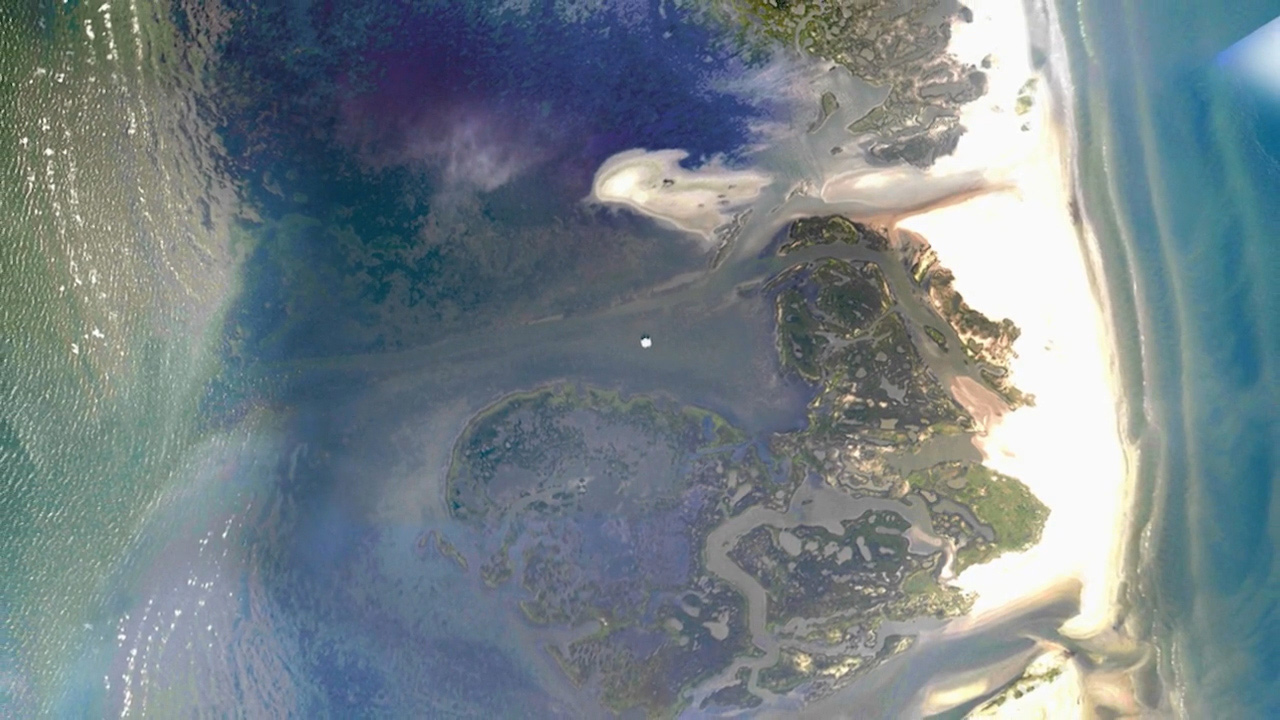
When you look at Google Maps, there's a sense of a canonical representation of the world. Well, if it's in Google Maps, it's real, right? Some people essentially read a Google map or a satellite map as the world as it is, like that is the world. It's not a representation of the world. And it's weird if you think about it from the perspective of a photographer, when you take a picture it's a creative act, right? When you take a picture, you get to frame it, choose when the photo is taken, the circumstances. You get to tell a story, and you have a really strong narrative voice. It's not considered to be completely objective, photographs can be subjective. People don't think about satellite imagery in that way, mainly because no one can make it themselves.
A lot of people said, "Why don't we just try to raise money or try to convince DigitalGlobe to release satellite imagery of the entire area." And I think that's good, of course. But there’s this idea that people who have something at stake, who have a certain perspective, can go in and choose what photos they take, when and what map they choose to create. It's a creative act and it's an important perspective. And so to simply assume that satellite or aerial imagery of a spill unfolding is sort of neutral doesn't make a lot of sense.
I believe BP had a Flickr feed. This was really weird. Maybe they had just had a photo feed and someone was copying them onto Flickr. But anyway, they showed photos of the wellhead, and they showed all these boats and stuff. There was one shot that looked like it had actually been photoshopped. I mean they weren't editing out oil slick, but they were choosing the photos as if they were like a PR thing, you know. They were really modifying and carefully curating it. There's debate over that.
And then there was another debate about the photos taken approaching the surface, like in a helicopter, as they were flying in some journalists to there. There was a debate about whether BP was specifically choosing a flight path so that the journalists wouldn't see the sheen as well. You need to look at it from a certain angle to see the iridescence. From another angle, it almost looks like it's not there. Whether or or not that was true, it shows an awareness that you can frame a certain shot. You can control even the visual imagery that's coming out of an unfolding disaster. And so, it's important to make sure that people aren't completely controlled in that respect, that they have the freedom to investigate and find out what the real story is.
Often, when people hear, "Environmentalist," they think treehuggers. In your perspective is the stuff that you guys do environmental advocacy? Is it about trees and polar bears, or is it about people?
I think that's a major misconception in the public: what is environmentalism? The history of the environmental movement in the US, in the mainstream media, has been,"Let's protect the whales, the frogs. Let's protect all these animals and plants out there." There's another story out there that the Environmental Justice movement has been telling for years. And it's that environmental issues are social justice issues. I learned this from people who had been working for decades on these issues. Environmental problems like oil and gas contamination, things that cause severe health problems in people, affect folks who don't have a lot of money, don't have a lot of resources, don't have the time, wherewithal, skills or education necessarily to respond to those things. A poor community can be dumped on because they don't have the political power to prevent it. Landfills, refineries, they're often put in neighborhoods, and by communities that can't respond to it.
At MIT, students of mine, they said, "Why should we care about the environment, aren't people more important?" How did you get in your mind that environmentalism is about protecting nature at the cost of protecting humans? In many ways, it's a common cause. This false balance is often brought up. "Well, we can save our economy or we can save the environment.” But, what is the true cost of something like petrol (gasoline) on the economy? How much money is subsidizing the petroleum industry if you count all of the health effects, degradation to infrastructure. What is the full cost of using petroleum in our society?
At the end of the day, the BP spill wasn't like Prince William Sound. It wasn't like the Exxon Valdez where it happened way out somewhere. There were people affected by that. There were birds covered in oil here too, of course. BP happened where there were people, and people who eat the fish, people who live near the water. They're going to pay the longterm effects of the toxins that are released into the environment. Environmental problems aren't problems that just affect animals and plants. They're problems that affect people, and that's the driving concern of people who live in oil and gas areas. That people are at risk. Their health, their livelihoods, their lives, in many cases.
Oil and gas pollution, industrial pollution affects people across socioeconomic lines. Everyone has to breathe the same air. In a city, everyone is being exposed to the same sorts of things. There is a sense of common cause there. Whether or not people think of environmental issues as affecting primarily animals and plants or affecting people, I think folks who are insulated, folks who have money, resources, time, often think of these as affecting other places, other people. It's not a remote problem. It's not something for someone else to deal with. It's a problem for us, right now. That's sort of the message of Public Labs, that everyone should be worried about it, and more than worried about it, should be able to respond to it and understand it better.
Who is responsible for policing these corporations or agencies that need to make better decisions to keep us healthy?
It's everyone's responsibility. I think, definitely, the government has an obligation to protect people from harm. There have to be regulations that prevent corporations through neglect or even through profit-seeking motives, to prevent those companies from hurting people. What's the cost of someone's health or someone's life, you know? The society we have today is only doing a certain amount to address the problem. The more people don’t feel powerless about their ability to respond, the better position we'll be in.
It should be easier to know about your risks. Should I drink this? Should I eat these things? Should I buy these products for my kids? All these decisions, it's an information problem. And I'm not saying that everyone should have to bone up and become a scientist or devote huge swaths of their time to it. I'm saying it it should be easier to know these things. And if we continue to rely on these bottlenecked processes where we have to have things sent to a lab and it takes days, weeks, months to process, it's expensive to get the testing done, no one's going to do it. I hate to say there “should be an app for it,” but there kind of should be, right?
If lots of people have the ability to understand that easily, measure and investigate, then the accountability landscape can be totally different. People are going to be able to insist that companies don't do these things, don't ship these things, that it is a big problem. They won't be sidelined simply for not having the expertise or the resources to do the test or understand the results. So, what Public Lab is trying to do is not only make it possible to collect information about pollution that's affecting you but also make it easier, make it an everyday sort of thing. If you have a question about something that you think might be a threat, you should be able to know that answer.
What are the kites and balloons like? What are they made out of?
We try to make it really easy to get started. Early on, we didn't sell kits but we do now. I think that the aesthetic of a lot of the things that people do in Public Lab today is still very much handmade. And that's really important because it shows that you can do it yourself. It shows that you can change it, modify it, second guess and improve.
The early ones were really janky but eventually we figured out you could put it inside a soda bottle. The soda bottle hangs down just a little past the lens, it's literally just to stop the camera from hitting the ground. It also provided some extra protection if it hits a wall, or swings around. It's not going to help if it drops in the ocean, obviously, but it was a little bit of protection. That soda bottle kept spinning and you get these spiral, radial blurs; a lot of the photos didn't come out, because it was spinning too much. So we put a fin on it. It looks like a badminton birdie, or a weather vane.
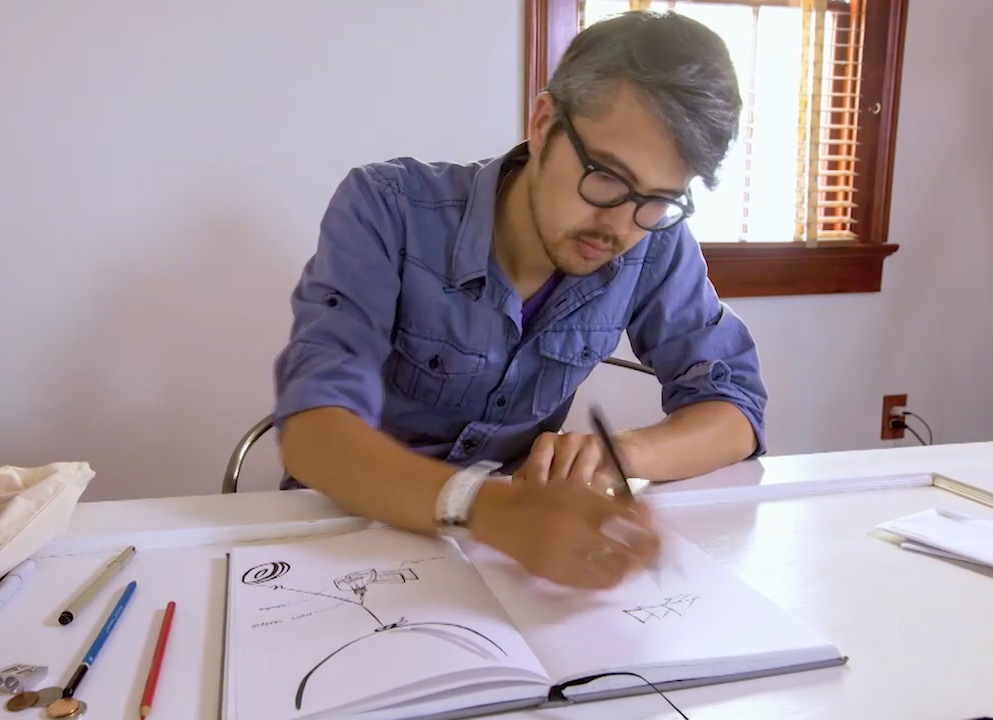
Jeff drafting new sensor ideas.
There have been some refinements since then, like hoops for kite strings that are easier to manage. Early on I lost a lot of cameras. Maybe the first year, I lost like six cameras, because the string would break. And then we found that, “Oh, if you use real thin string, it'll go much higher. It's a lot less weight, less drag of wind.” So, I started using fishing line, and fishing line is really great. But if there's any wind or tugging, there's a lot of force and it would just snap and then it's bye, bye! We put a note on there with our address and phone number, and occasionally we'd get one back with amazing photographs, because it would've flown up a mile or two.
Remarkably, that happened in Lima, Peru. We switched to weather balloons, which are much bigger, five or six feet wide, and then you just have one big balloon, but it's a lot of helium in there. It's sort of expensive. We also use those mylar sleeping bags. You know at a marathon, they give you the blanket? They come in sleeping bags, too, and you just seal it shut and fill that with helium. If you seal it really well, it'll stay inflated for weeks. They're not as round, but they're much lighter than other ones. And so, we would take three of them and tape them together.
I remember in Peru, we had one like that. It had these three silver, person-shaped blobs. The balloons will cause drag, so, we thought, if we made it like a kite, it would provide lift. It was sort of a hybrid. It was super effective in this one example, and it was, if you can imagine, three six-foot tall, balloons. It was really pulling. I think we had 200 pound strength string, and it just broke. We totally lost it, you're usually pretty sad after that. Then the next day, I got an email from someone on the other end of the city, miles and miles away. They said, "I found your, your, um… I found your SD card." It was really funny. The camera was gone, but they'd found the card, I don't know. Anyway, whatever happened, someone went and picked it up and uploaded the photos. By that time, I had left Peru and we started getting them in, and they're just incredible, photos from miles above Lima. And that one had two cameras on it. It had an infrared camera and a regular camera. We were able to do some of our first multispectral analysis photos with that.
How did you feel about everything that was going on with the BP oil spill?
When I first arrived, it was end of April, and oil hadn't hit land. It was still out there. Part of the idea was initially to make maps of areas before they were hit; the last chance to get out to see them before they're destroyed. So, it was this impending tragedy, and it was really beautiful. That first kite flight, we were going around, and there were just these incredibly beautiful wetlands and birds. I remember driving through and seeing a lot of oil infrastructure. It's not untouched; they've cut canals, there are platforms, pipelines. But still, there's enough left that you can go in. I remember just being blown away by how beautiful it was.
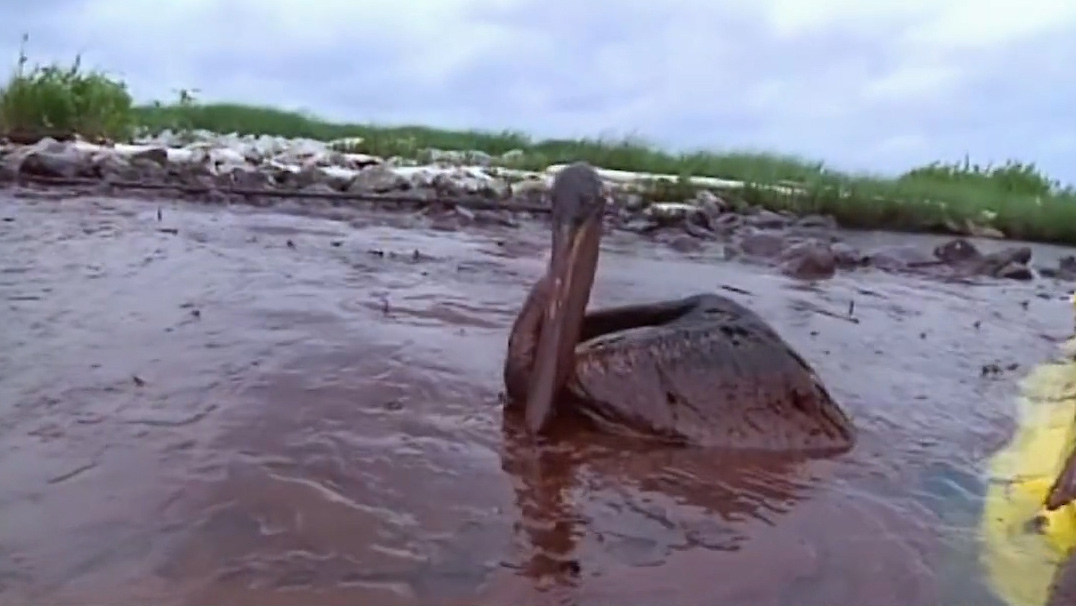
An oiled pelican, victim of the BP oil spill.
I think two weeks after the actual explosion it started hitting places. That was pretty rough. We saw tarballs washing up, we saw a lot of dead animals, fish. You'd sort of smoosh the fish a little bit and oil would bubble up out of its mouth. It was depressing. Really what we're doing is just documenting what was going wrong. You know, we didn't have much power, we weren't setting out to stop it, in the immediate sense.
Much later, we would encounter people out on boats in Barataria Bay, who were involved in the cleanup, and they'd come out wearing official-looking stuff. They'd have a hat and clipboard and they'd ask you what you’re doing. Their whole demeanor was implying that you're not supposed to be there. We actually started wearing, even in the early days of the spill, fluorescent rain jackets, and they matched. It was really funny, because when you were wearing those, they didn't have any badges or anything on them, but who goes out there in a bunch of matching fluorescent jackets? People would just assume that we're someone official.
They wouldn't bother us as much, and we could collect evidence, take pictures, make the map. Then some of the cleanup people would come around and say, "I'm not supposed to talk to you, but you should go over there. You should take a look at what's going on over there." People who were involved in the cleanup were people who were out of a job for whatever reason because of the spill, and they had to get work.
What did you do with the photos? Did any public good come from creating these aerial maps?
The first thing is just that they were widely published; published in "The New York Times," in "The Boston Globe." They were published in a lot of local papers. Regional and national news coverage. Very quickly, the Wikipedia page about the BP oil spill featured prominently the photo that we took of the islands in the Breton Sound, the Chandeleur Islands. People got to see firsthand really dramatic, concerning photographs about what was actually happening, which remarkably were not really being published by almost anyone else.
Journalists couldn't get out to the places we were going. We were working with local fisher people. A guy who ran a fishing charter said "You know, we can't fish anymore but we have our boats. This is important. We'll take you out anywhere you want to go." The Chandeleur Islands are 40 miles off, the coast, and these fishing boats go all the way out there with a team of volunteers to make some balloon maps. And then come back. I think that it's hard to assess some of the effect. If you're publishing information and if you're able to produce evidence, is that producing an awareness or a sensitivity in corporations that they can't assume no one's looking?
Do you see this as science, this data collection that you and your community members are involved in?
I think it's actually not “citizen science.” I think it's related but in citizen science there's some scientific body or scientific actor who is seeking to develop research and collect data. What we're doing is, in a lot of ways, the opposite. Where the “us” is not us scientists, the “us” is us people who are affected by pollution. It's definitely science. But it's sort of a new way of thinking about science. It's funny to say it, but it's like science serving the people; answering questions people want to know. That's supposed to be what science is about. I think over time there's been a separation, the science community is not as close with the public as maybe it once was or as it once intended to be. The alliances and relationships that scientists have with members of the public are pretty limited.
What we're trying to do is renegotiate that relationship. The public needs certain questions answered. What we'd like to see is people who have urgent questions about, say, how pollution is affecting them, and being more able to help frame scientific questions. Then they can propose experiments or collaborate with scientists to propose and structure the work, perhaps also be involved in collecting it. Ultimately, their participation is not limited to the data collection phase. There's a discussion that begins much earlier about what do we need to know, what is important to us now, what are the questions that we have to know for our own safety and our own health? We'd like to see a partnership between scientists and the public through the entire process.
Are there people out there who are trying to prevent citizens from collecting data, and if so, what are their intentions?
It's a little more complicated than that, but it's obviously a concerning issue. I think it is unconstitutional what they're trying to do, the law that you're talking about, the Wyoming trespass law, is very cynical. But in some ways, it's a mark of success of this movement. You go back 10 years, would companies even be worried about people collecting data or publishing data about their activities? It's sort of an admission that they're trying to tamp it down, you know, that they're trying to stop people, on an individual basis, collecting this sort of data. The negative side is that they are literally stopping people from taking photographs of terrible environmental degradation that's going to harm people.
It shares a lot in common with the Boston Police Department versus Glik. (https://en.wikipedia.org/wiki/Glik_v._Cunniffe) (Simon) Glik was filming the police being aggressive, for something they didn't think the police ought to be doing. Accountability through evidence, right? The police arrested him and it went to court. Are people allowed to film the cops? Well, the courts have said unambiguously, yes. There's really alarming examples where cops are covering the cameras or they're literally saying on the footage, "Hey, guys. The camera's on now, so hold off in what you want to do 'til later." The right to film the cops, you know, as protected in BPD versus Glik is not about cops, is not about the sort of standard way that the cops should be recorded always in their actions, you know. And that's important as well, but this is about individuals' right to record things that they think are wrong. It gets back to the question of the subjectivity in taking a photograph, and the choice of when to film, how to film, and how that is presented.
I think that in the standardized and institutionalized means of recording data or collecting evidence about environmental issues through the regulatory framework, it's not comprehensive. Many places, like in Louisiana, a lot of it's self reporting. And so with the law, what they're curtailing is individuals' ability to collect data on their own and to look out for things, and it's really alarming.
I can't imagine that the courts will allow that stand. I can only hope that free speech prevails.
In Louisiana, the refineries flare off extra gases and materials, often at night when no one's around to watch. But actually, the regulations are really lax. There's only self-reporting.
There's no external party monitoring it. The crazy part about the self-reporting requirement here is that they're not even required to measure it. It's not an empirical measurement. Even if they got to choose where the sensor is and what kind of sensor and all this stuff, they didn't have to do that. They only have to report an engineering estimate of what's being vented. You know, what's actually happening here, why isn't anyone actually recording real data? (C&C: see program 2, Citizens + Scientists, for the somewhat surprising “Black & Smelly Rivers” app story on how many factories in China are mandated by the Central Government to make real-time emissions data public, and how IPE has put that data online in a mobile-compatible way.)
The really important part of what we're doing at Public Lab is actually not the mass pooling of data. It's about creating means for people to produce and own that data themselves. The Public Lab founders have talked a lot about this term “small data.” And it's actually big data, mathematically, we're saying we should collect a lot of data. We should be really taking a lot of information. We should be expanding the scope and breadth of what we measure about the environment and how it might hurt us. I think that what we're really pointing out with the idea of small data is not what the data is but who is collecting it and for what? How is it framed? With big data, you often think of a big company slurping up that data or the government, this huge database that they can infer things from. What we're seeing here is that model treats all the data as sort of like a petri dish. It's like an experiment in progress: pretty dehumanizing.
Do you think that research done through Public Lab is being used in a meaningful way?
The EPA in New York is starting to reach out, as they did during Hurricane Sandy, to Public Lab members in the area for information. Gowanus was flooded like everywhere else during Sandy, and a lot of things were washing into the canal. The local EPA office actually contacted some Public Lab members and asked if they had good imagery or good information about what's happening. That's a really interesting reversal of information flow, (where) the EPA thinks of these citizen groups as a resource. That's really cool and I think that indicates that people are starting to think about who gets to generate the information is really important.
Also you see that the EPA Superfund plan has incorporated data from Public Lab and other community groups. Previously, the EPA had hired, of course, an engineering firm to survey all the inflows, but they missed some. The balloon mapping revealed distinct spots where there was clearly stuff flowing in. Those were submitted as data. The EPA has adopted it and revised their plan accordingly.

Image Credit: Public Lab
Companies build tools, and then they market them, they suggest uses. Maybe there's an experimental one that's developed in a lab and then commercialized later. But there's sort of a hidden part of science that's about what infrastructure is available, what tools are available. And when you look at some of our work, we're building it on a lineage that goes back decades. Spectrometers, for example, have been in use for many decades for a wide variety of purposes, and the techniques have been slowly refined. There's a literature lineage to that which I would say doesn't just support science. It actually shapes it. The idea that you could do your experiment in a different way with a tool that doesn't yet exist, or you could ask a different question based on a tool that you don't have access to, is pretty important, actually.
We're also beginning to question how science is currently done. Some of our devices, like our spectrometers, you can sample 10 times a second. It's a different optimization. Say you're designing an instrument. We could build one instrument for 10,000 or 100,000 dollars. And people will buy them because they need to do research to answer certain questions. What we've done is we've said not how much would it cost to build a spectrometer but how cheaply can we build a spectrometer and what does it mean for how it will be used?
We have a $10 spectrometer. We're not a competitor. We're not going to steal any customers away with our $10 paper spectrometer, but it just highlights the completely different ends of this that we're approaching from. It highlights the challenges we're going to face in making devices that are credible enough and rigorous enough that they're going to be useful. (C&C: See also program 3, where Brian Beveridge from the West Oakland Indicators Project poses a question as to whether many low cost instruments might have advantages over one, or a few, expensive sensors.)
What kinds of tools do you create, for what purpose?
When we started out, especially sort of just before formation of Public Lab, we were called the grassroots mapping community. We were narrowly focused on one technique and it was something we explored; making balloon maps, making kite maps. How cheap can we make it? What applications did it have? How did it change the balance of power in terms of production of information? But the moment we started becoming Public Lab, we kewn from the outset that it wasn't just about that one technology. We could have narrowly focused on this and just spread balloon mapping and kite mapping as far and wide as we could. And I think we've done that but from the outset, I think, all the founders of Public Lab and all the initial people who're really involved in it saw something bigger. It was that we were reconfiguring how evidence is collected and changing who gets to collect it.
We wanted to look at not just documenting spills from above with photographs but we wanted to know what was being spilled. We wanted to know what was the effect on the ecology in that area, and eventually the people. We wanted to know all these other questions. And we also saw people elsewhere in the world were facing similar problems.
So, our second batch of projects came out of problems surrounding the spill. We started by balloon mapping, but we wanted to know, if you found something on the beach, a tarball, how could you prove that it's crude oil? We got into spectroscopy. We developed these cheap spectrometers. We wanted to know, is this eroding away the wetlands, destroying land? And we got into multi-spectral photography, taking aerial photos with infrared cameras. A lot of the initial ones are really about oil, different angles on oil, different questions we had about oil pollution.
Then we broadened things a bit and said, first of all, these core products cover a lot of ground. If we're gonna be working them for a long time we're gonna be tackling big problems with them. How do we create a schema, a sort of scaffolding such that as our community grows, it can organically tackle new problems? How can it respond to new needs, develop new techniques and methodologies, communities of expertise and practice to answer new problems? We got really fascinated and passionate about the project, not simply to create specific tools for specific problems, but to generalize that practice.
So, our challenge was to try to develop a community that can adapt and find new solutions to new problems as it grew. We've tackled a lot of those. We have projects now that are looking at measuring turbidity in water, like how opaque the water is. We have a project looking at measuring dust from sand mining. There’s another one interested in formaldehyde detection in the home.
All these projects have sort of evolved and I think we've been really gratified. We’ve been doing this for five years and only in the past year and a half or so have there been so many new, organic projects. All these of these different things, they weren't started just by the core staff, they were started by community members who have real questions that they want to answer.
